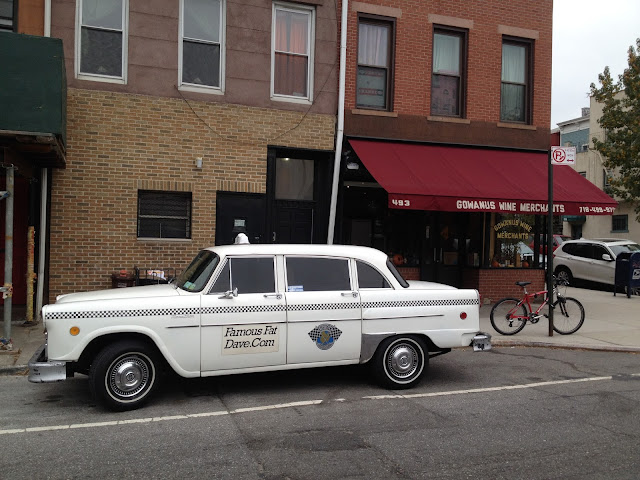PANTHER!
I was riding my bike way out in the hinterlands of deepest Brooklyn when I passed this muscle bound punk looking for a fight. That wide-eyed stare was unnerving to say the least. This is obviously a car that's still up from the night before . . .
What we have here is a 1967 Chevrolet Camaro SS in Rally Red with somewhat suspicious black stripes. I tend to be suspicious of any special edition of a hugely popular car when discovered in front of some shady shop off the beaten path. Who's to say this wasn't a 6 cylinder base model Camaro that someone keeps tacking SS parts onto? Nobody knows so I'll describe this at face value for now but be warned if you're looking to buy one of these; check the VIN to see what it started as because that's 75% of the value.
The option list for the Camaro was gargantuan from the get-go. This example has the rare concealed headlight option where the covers slide inwards behind the grill itself. Since those little turn signals are located beneath the bumper we can surmise that the concealed headlights are original to this car (if that option was not selected the turn signals would be located in the grill between the headlights). The badge in the center states that this is a coveted Super Sport equipped with the mighty 396 V8. This car could definitely destroy its rear tires in every gear with no issue.
This is the very first year of the Camaro; the Chevy answer to the Ford
Mustang. In the months leading up to the unveiling of the Camaro the
press was teased with references to a Panther that was about to strike.
When people asked what the panther was Chevy replied "it is a small,
vicious animal that eats Mustangs". The proportions are pretty close to the Mustang with its long hood/short deck design.
That hood is correct for the SS package but there should be 2 non-functional chrome vents in those indentations. Originally the SS Camaros had a stripe that wrapped around the full width of the hood and down the sides past the edge of the bumper with a break for a chrome SS emblem on each side. With big stripes on the front, no stripes on the hood, and smaller ones under the windshield it's anybody's guess what this looked like when new. The Rally Red color looks correct. The 6x9 speakers on the back deck suggest that this is owned by a mook.
These taillights are 1967 only. The '68 version is very similar but has a central divider on each side. From this angle this ride is almost identical to the Pontiac Firebird of the same year. Both cars were released in tandem and shared most components with the exception of the grill and lights.
The Camaro was an immediate hit with the public and helped chip away at the pony car market that Mustang had essentially monopolized for the previous 2.5 years. They were built in such numbers that it doesn't really matter to me whether this is a clone in progress of an original SS 396. You can order every component for this car from a catalog including an entire body. In fact if you had some perverse desire to do so you could build a Camaro from scratch with no donor car needed.
Well that's where we'll leave this extreme bro of a car. You might not expect classic muscle cars to be hiding throughout the city, and indeed they are targets for thieves whenever they are left unattended, but they pop up now and then. This one being red with a whole shelf full of speakers gives me an idea of just the sort of dude who owns it and he's probably at the gym right now.





















































